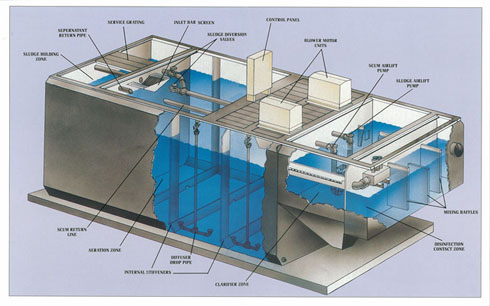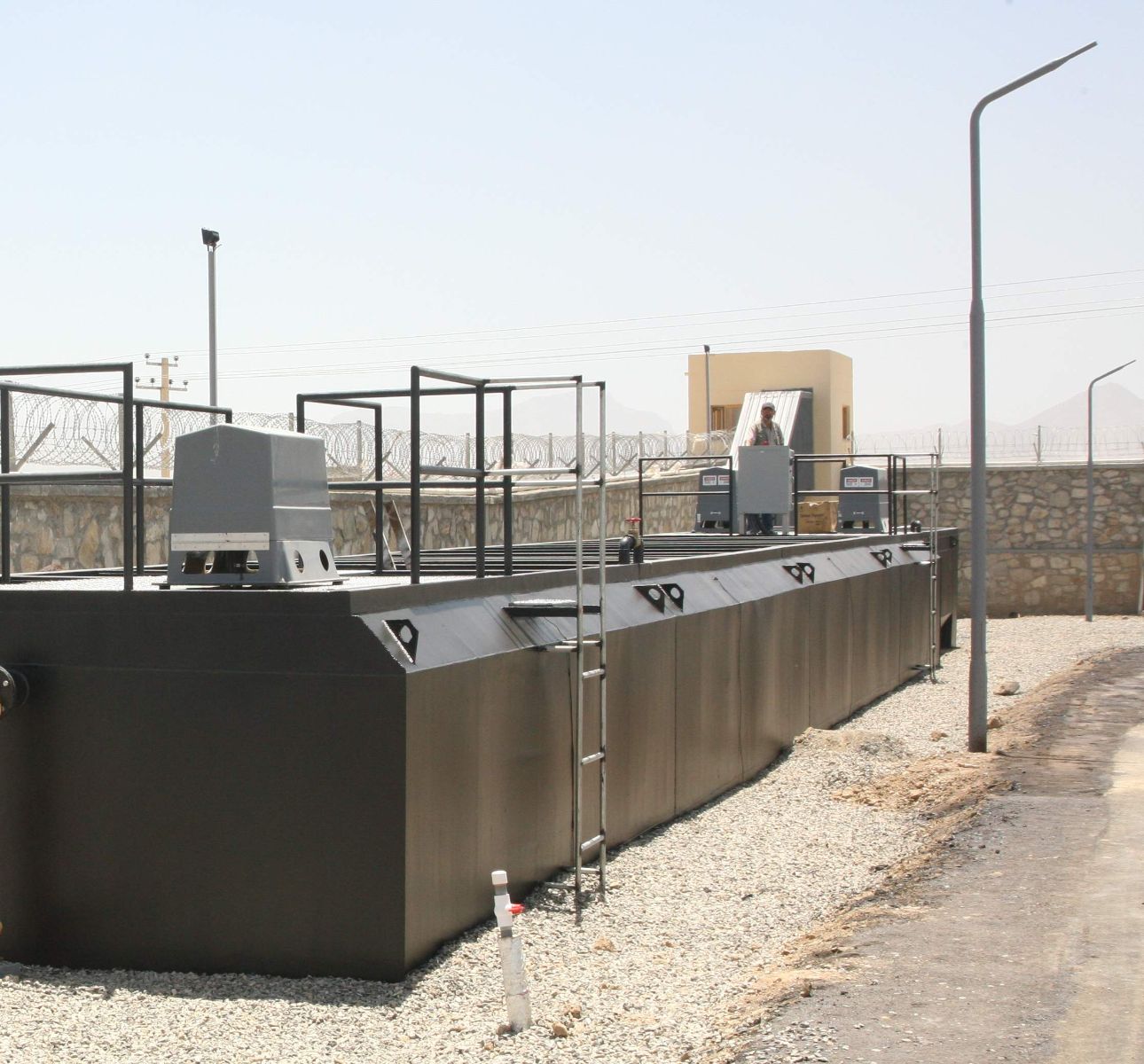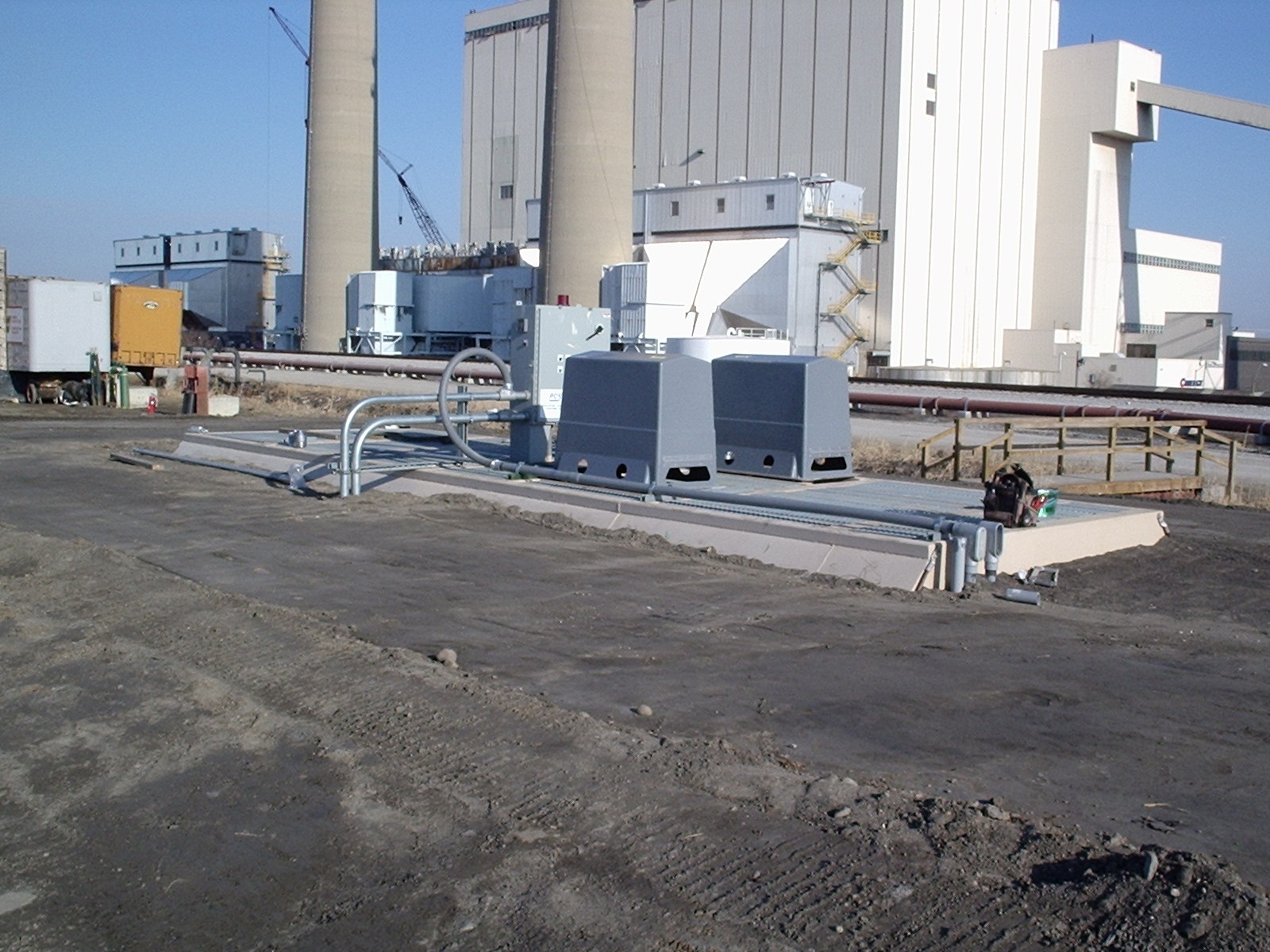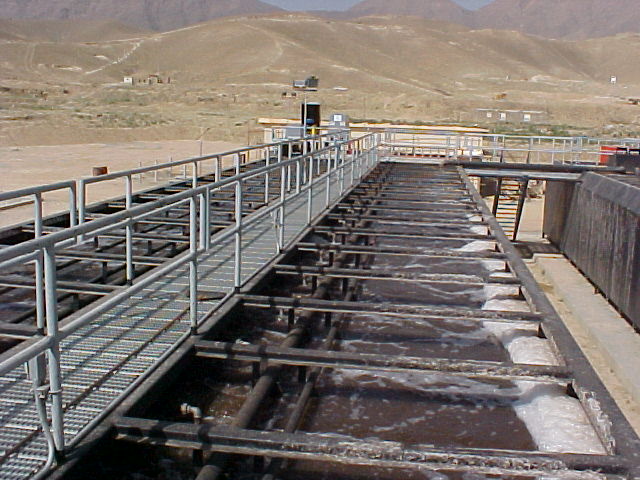What you'll find here...
Pollution Control Systems is recognized worldwide for its products and technologies to treat wastewater to a safe sanitary water effluent quality discharge meeting and/or exceeding effluent standards recommended by the US Environmental Protection Agency.
Our selection of a packaged treatment plant offers the user a pre-engineered and pre-fabricated method of treating wastewater with an aerobic process. The final effluent can be released safely into the environment such as receiving streams, rivers, etc. Treated non-potable water is also being used as a new source of water to promote agricultural and aquaculture production, industrial uses, water sustainability, and reclamation uses such as irrigation, wash down, and / or artificial recharge.
TECHNOLOGIES AND PROCESSES INCLUDE
- Clarification
- Chlorination / Disinfection
- Extended Aeration - EA
- Activated Sludge Process
- Nitrification / Denitrification
- Oil / Water Separation - OWS
- Tertiary Treatment
Back to Top
TYPICAL APPLICATIONS
- Land Development / housing / subdivisions
- Small and medium sized communities and cities
- Mobile Home Parks
- Remote mining, logging, and construction sites
- Recreational areas such as parks, campgrounds, marinas
- Manufacturing facilities, power plants, military bases
- Schools and other educational campuses
- Government compounds
- Low Flow / High Strength and High Flow / Low Strength applications
- Biological waste water treatment for industrial wastewater flows
Back to Top
ADVANTAGES
- Pre-engineered, pre-fabricated structures result in lower cost
- Unit is easily transported to the customer’s project site
- Design allows for quick turnaround time for delivery and installation
- Treatment System is simple to operate and requires low manpower
- Effective extended aeration principal
- User friendly – low and easy maintenance
- Regulatory compliant
- Custom design / application specific systems
- Long service life
Back to Top
MODULAR SYSTEMS
Pre-engineered modular components such as diffused air blowers, flow equalization tanks, aeration tanks, sludge holding tanks, wastewater clarifiers, and disinfection units allow for the package plants to be sized specifically for the customer’s application. They can be designed to handle a variety of influent flow rates and BOD loadings to meet discharge requirements.




Back to Top
EMULATING NATURE
A decentralized wastewater treatment system, commonly referred to as a “packaged plant”, utilizes the biological extended aeration principle of operation, which is a variation of the activated sludge treatment process. This system functions by creating an environment with sufficient oxygen levels and agitation to allow for bio-oxidation of the wastes to suitable levels for discharge.

Waste material in domestic wastewater is generally organic (biodegradable) which means that microorganisms can use this matter as their food source. A biological wastewater treatment system makes use of bacteria and other microorganisms to remove up to 95% of the organic matter in the wastewater.
Biological waste water treatment systems and processes were actually developed by observing nature. As waste entered the stream, the dissolved oxygen content in the water decreases and bacteria populations increased. As the waste moved downstream, the bacteria would eventually consume all of the organic material. Bacterial populations would then decrease, the dissolved oxygen in the stream would be replenished, and the whole process would be repeated at the next wastewater discharge point.
Back to Top
EFFICIENT MULTI-STEP WASTEWATER TREATMENT PROCESS
.png)
Click on image above to view larger
The influent wastewater enters the wastewater treatment package plant by passing through a comminutor and/or bar screen for gross solids removal. This step provides for the mechanical reduction of solids prior to aeration.
Once the wastewater has entered the aeration chamber, the untreated flow is mixed with an active biomass in a rolling action that takes place the length and width of the chamber in a slow forward progression. This rolling mixing action is the result of air originating from air diffusers located along one side of the bottom of the tank. This insures that adequate mixing is maintained in the tank. The chambers are filleted on each side along the bottom to assure and enhance the rolling motion of the water and to eliminate any “dead zones” in the tank. The oxygen transfer achieved with the diffused air passing through the wastewater coupled with the rolling action provides a sufficient oxygen supply allowing microorganisms to oxidize treatable wastes in to carbon dioxide, water, and stable sludge.
After aeration, the wastewater flows to the clarifier that typically has a hopper bottom configuration. The wastewater clarifiers are sized to provide the required retention time based on an average twenty-four hour design flow. During the settling period, solids settle on the bottom of the clarifier. Airlift pumps with adjustable pumping capabilities are used to return these solids, as activated sludge, to the aeration chamber to maintain the maximum efficiency of the biological process. When necessary, excess sludge is wasted to an aerated sludge digestion tank for additional treatment and reduction. A skimmer airlift pump is used to return floatable solids and scum to the aeration chamber for further processing.
The treated water flows from the clarifier to a disinfection chamber for treatment via chlorination or ultra-violet (UV) disinfection prior to discharge to complete the treatment process. Tertiary filters may also be used where a higher quality of effluent is required.
Back to Top